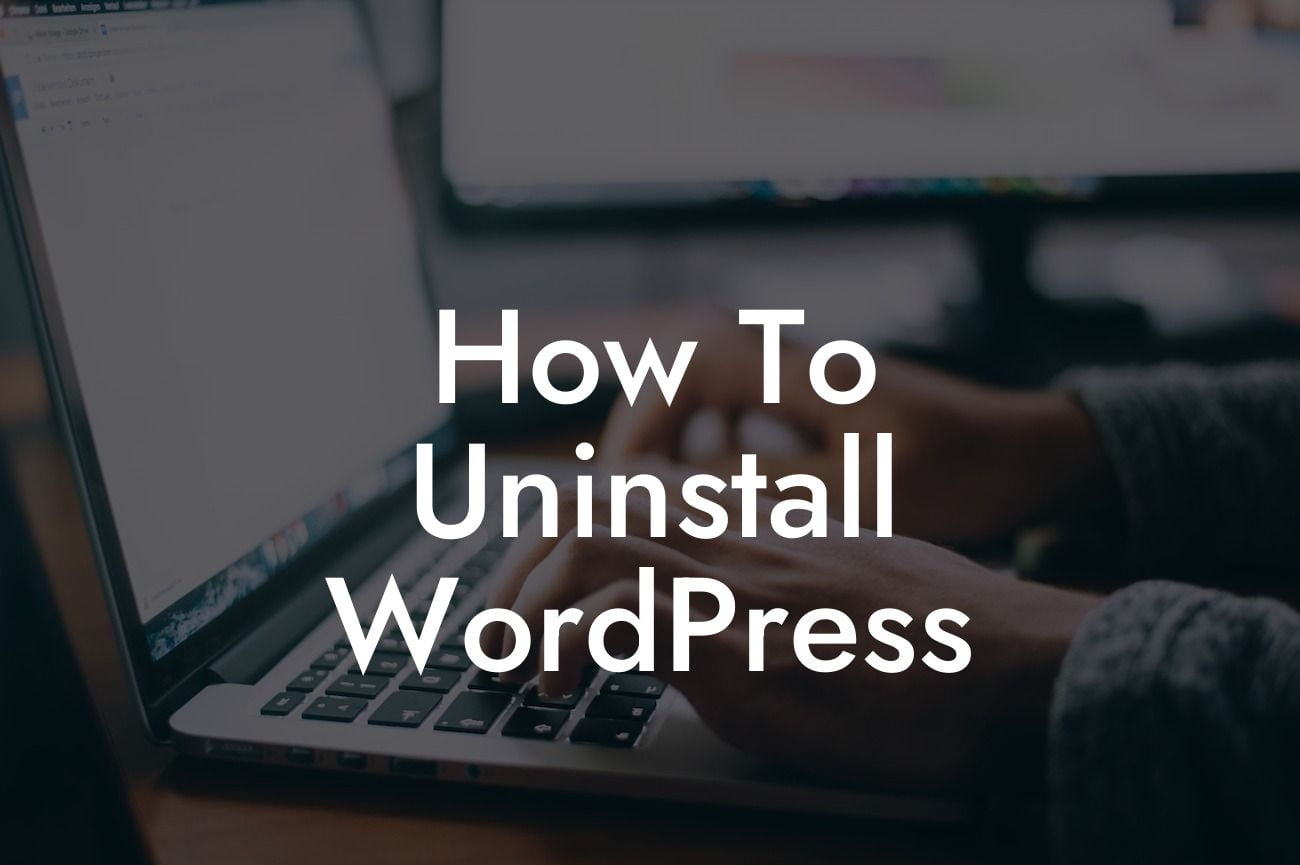Uninstalling WordPress might seem like a daunting task, but fear not! In this detailed guide, we will walk you through the process step by step, ensuring that you bid farewell to WordPress in the most efficient way possible. Whether you are an entrepreneur or a small business owner, our goal is to provide you with the knowledge and tools to supercharge your success. Say goodbye to cookie-cutter solutions and get ready to embrace extraordinary techniques that will elevate your online presence.
Uninstalling WordPress can be done in a few simple steps. Before we dive into the nitty-gritty, make sure to create a backup of your website and database. This precautionary measure ensures that you can restore your website easily if something goes wrong during the uninstallation process.
1. Remove WordPress Files:
To begin the uninstallation process, access your website's file system through FTP. Locate the WordPress installation directory and delete all the files and folders associated with it. Be cautious while deleting, as any files not related to WordPress should remain untouched.
2. Drop the WordPress Database:
Looking For a Custom QuickBook Integration?
Next, login to your web hosting control panel and access phpMyAdmin. Locate the database that WordPress uses and drop (delete) it. Make sure you select the correct database, as dropping the wrong one can lead to data loss. Confirm the deletion when prompted.
3. Remove WordPress Configuration:
WordPress creates a configuration file called "wp-config.php" during installation. Look for this file in your website's root directory and delete it. Removing this file is essential to ensure that any remaining traces of WordPress are completely eradicated.
4. Delete WordPress Plugins and Themes:
Don't forget to remove any active WordPress plugins and themes. Log in to your WordPress dashboard, navigate to the "Plugins" and "Appearance" sections, and delete all the plugins and themes you no longer need or want. This step guarantees a clean uninstallation, without leaving any clutter behind.
How To Uninstall Wordpress Example:
Let's suppose you have decided to move on from WordPress and switch to a different website platform. You follow the steps mentioned above diligently. First, you create a backup of your website and database. Then, you access your website's file system via FTP and delete all the WordPress files. Next, you access phpMyAdmin, locate the WordPress database, and drop it. Afterward, you remove the wp-config.php file from your website's root directory. Finally, you log in to your WordPress dashboard and remove all plugins and themes. Congratulations! You have successfully uninstalled WordPress.
Uninstalling WordPress shouldn't be a daunting task anymore. By following the steps outlined in this guide, you can seamlessly bid farewell to WordPress and explore new horizons. Remember, DamnWoo is here to support you in your journey towards success. Explore our platform for more helpful guides and consider trying our awesome WordPress plugins to further enhance your online presence. Don't forget to share this guide with others who might benefit from it.













